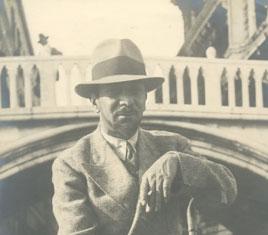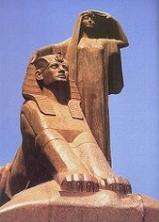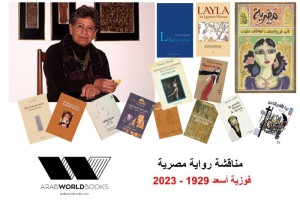
Mahmoud Mokhtar(May 10, 1891-March 28, 1934) was an Egyptian sculptor. Notwithstanding his prematurely early death, his impact on contemporary Egyptian art has been colossal. He is considered the father of modern Egyptian sculpture. Born in the Nile Delta region in a small village called Nesha, Mokhtar moved to Cairo in 1908 where he joined the newly founded School of Fine Arts. In 1911, he was granted a scholarship by the founder of the School, Prince Yusuf Kamal, to study sculpture at the Ecole des Beaux-Arts in Paris. 
Although Mukhtar was at ease in France, and regularly exhibited at the Salon des Artistes Francais, his aim increasingly was to search for an Egyptian identity in art. In order to re-establish an Egyptian style in monumental sculpture he developed a 'neo-pharaonic' style, and became the first Egyptian artist to use granite since Ancient Egyptian times. In France, he befriended members of the Wafd Party and was inspired to create the prototype of his famous statue, Nahdit Misr aka "Egypt's Renaissance," which was initially unveiled in Ramses Square in 1928 and now stands opposite the Cairo University Bridge. The massive pink granite statue, the most official of his works shows a sphinx about to rise, and a woman unveiling.
Winning many honours and awards in Paris and Cairo, Mokhtar also became famous for his two monumental statues of Saad Zaghlul (one in Alexandria, the other in Cairo). Some of his other well-known sculptures include "The Secret Keeper," "Isis," "The Nile's Bride" and "Khamaseen.
Mahmoud Mokhtar Museum
The museum houses the sculptures of Mahmoud Mokhtar, the most famous Egyptian sculptor and the first sculptor in the modern Egyptian art movement. Mokhtar (1891 - 1934), was a genius pioneer who revived classical Egyptian sculpting experience blending it with contemporary art movements and reality derived from the Egyptian society, particularly its rural community.




